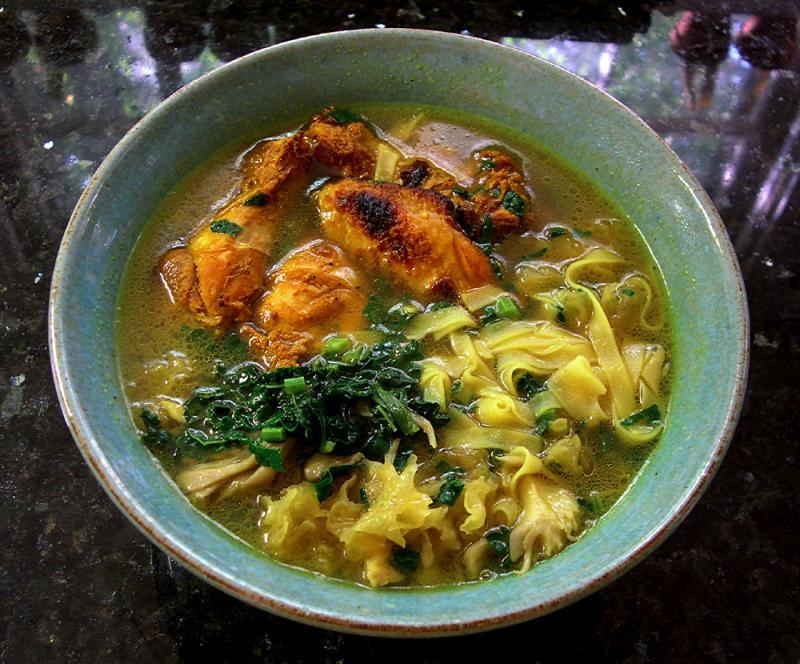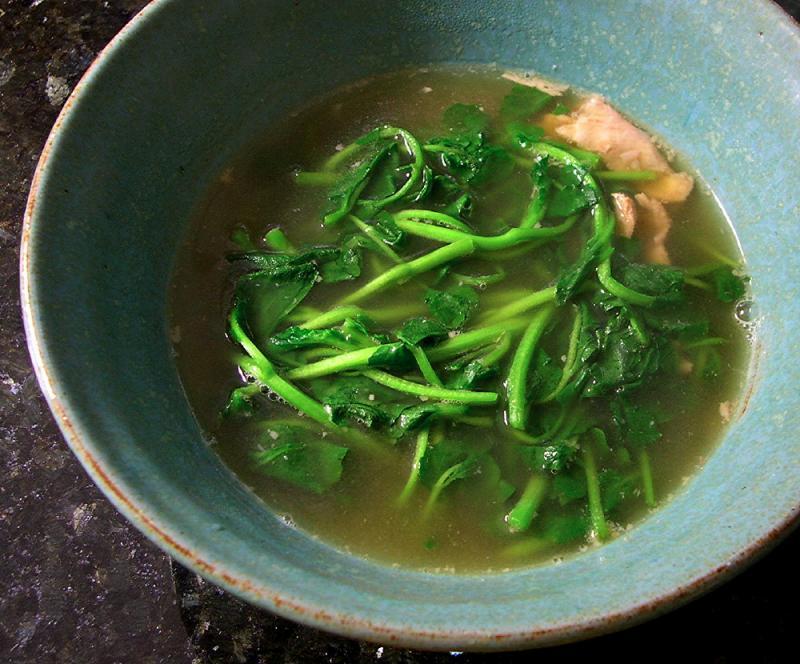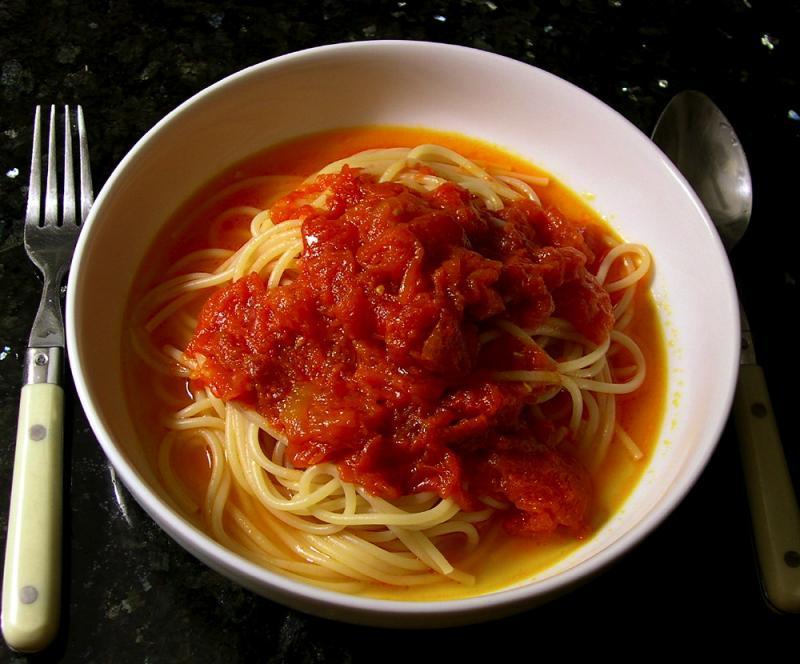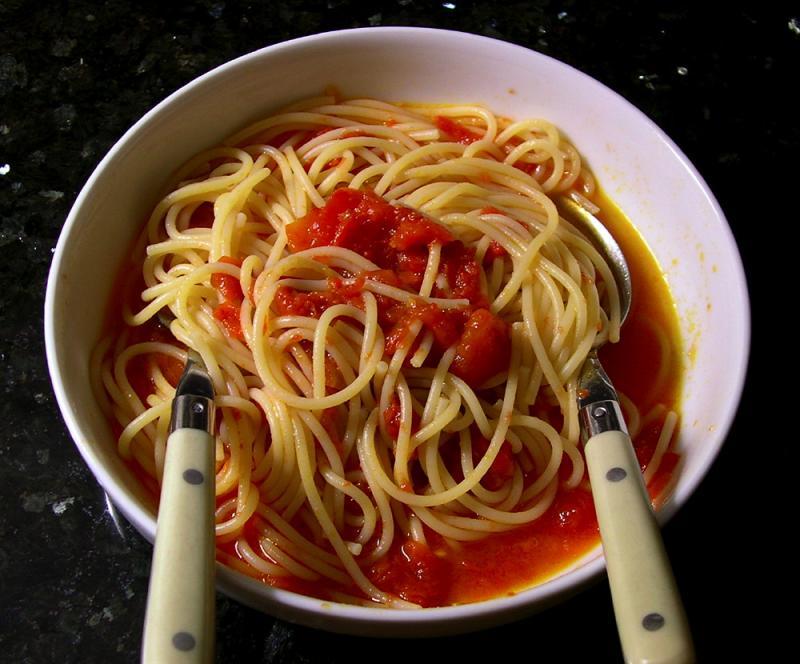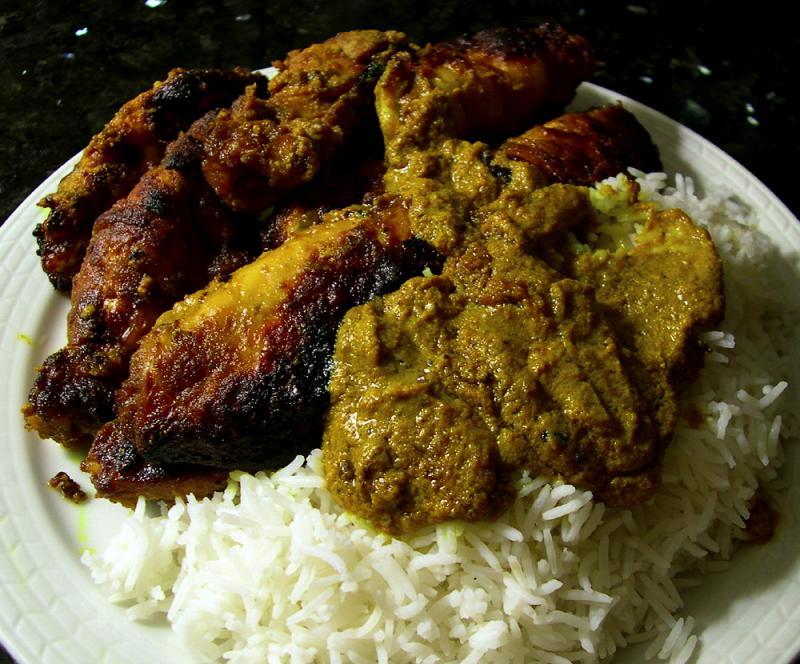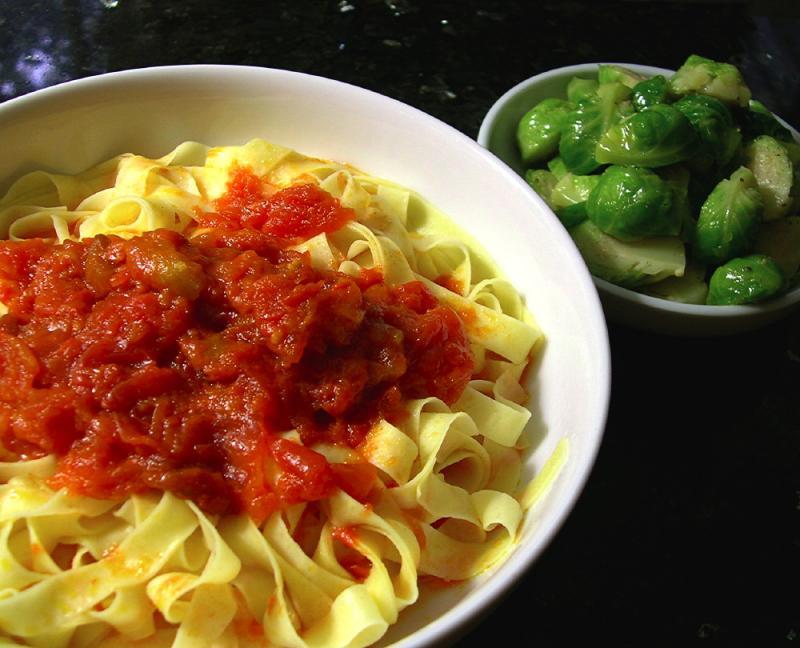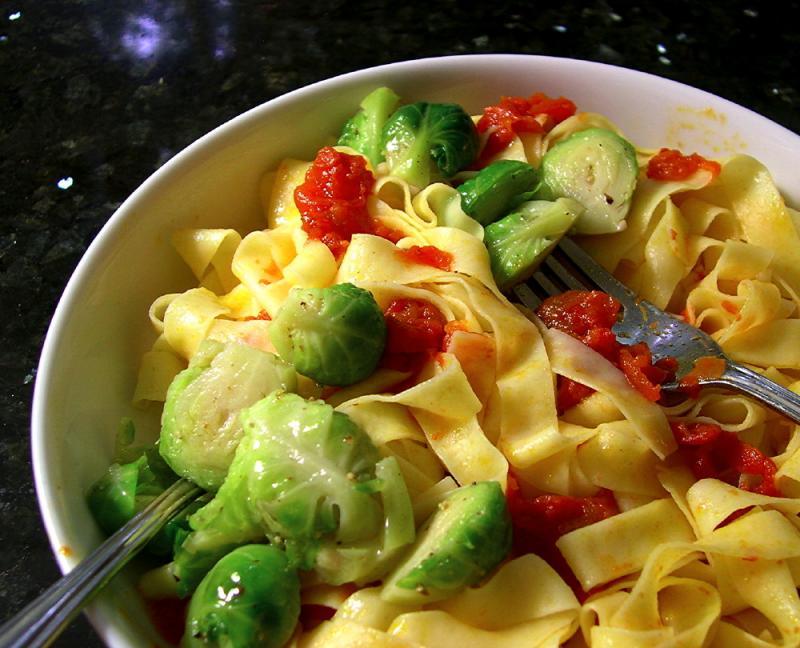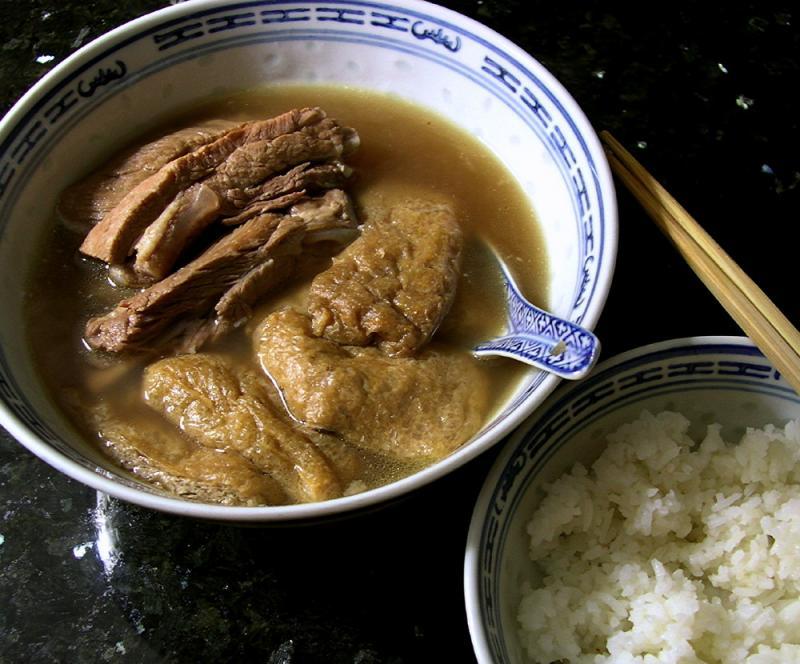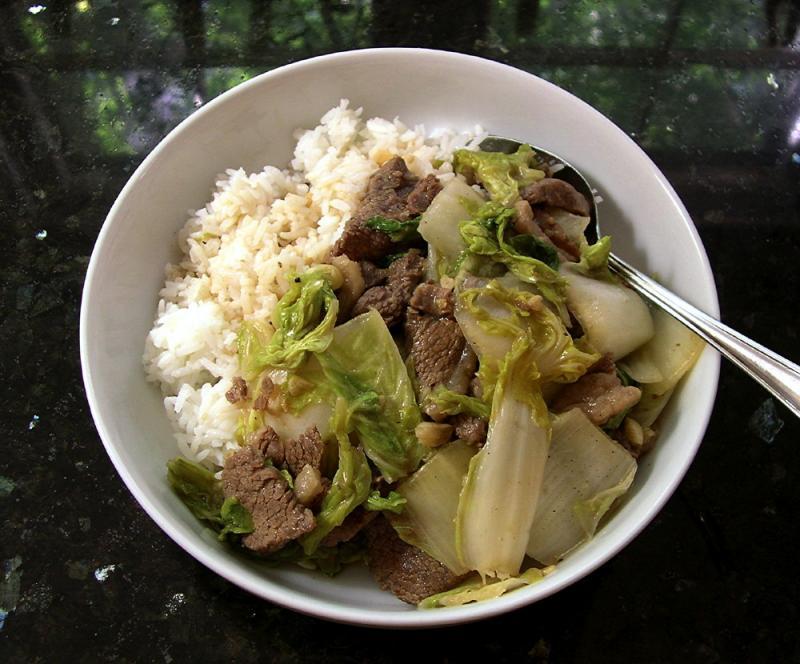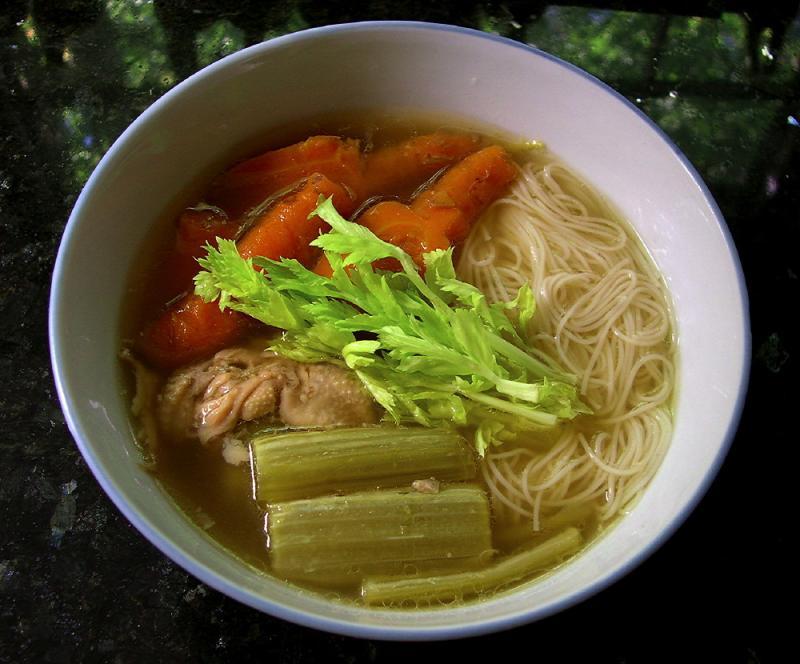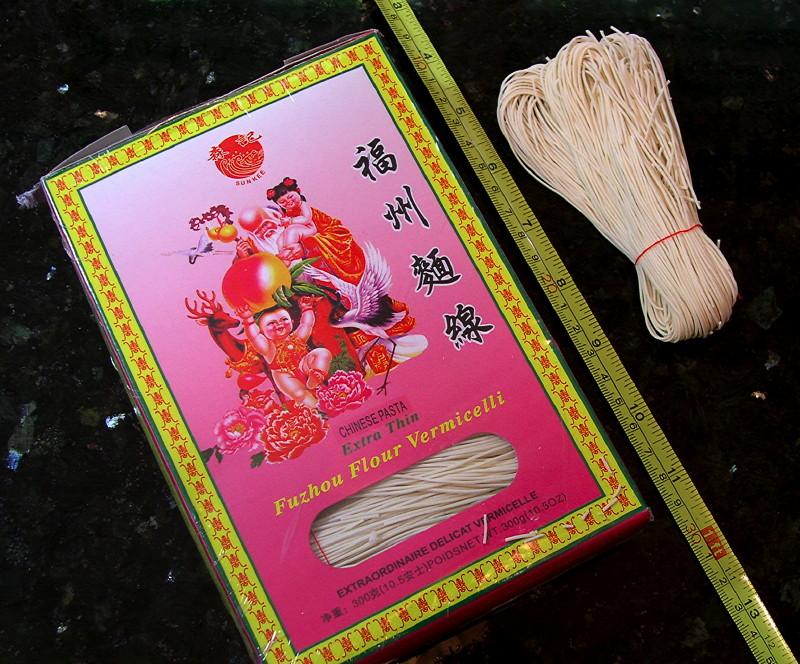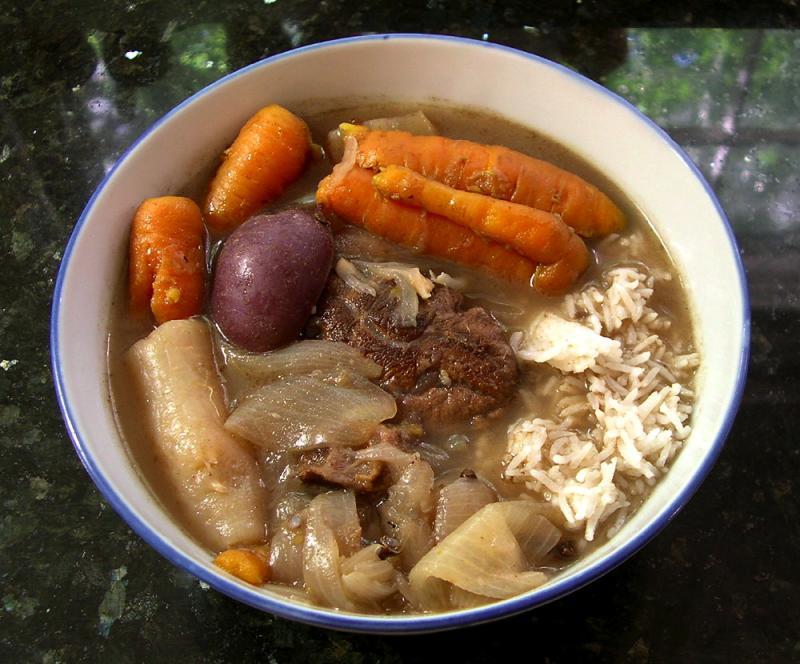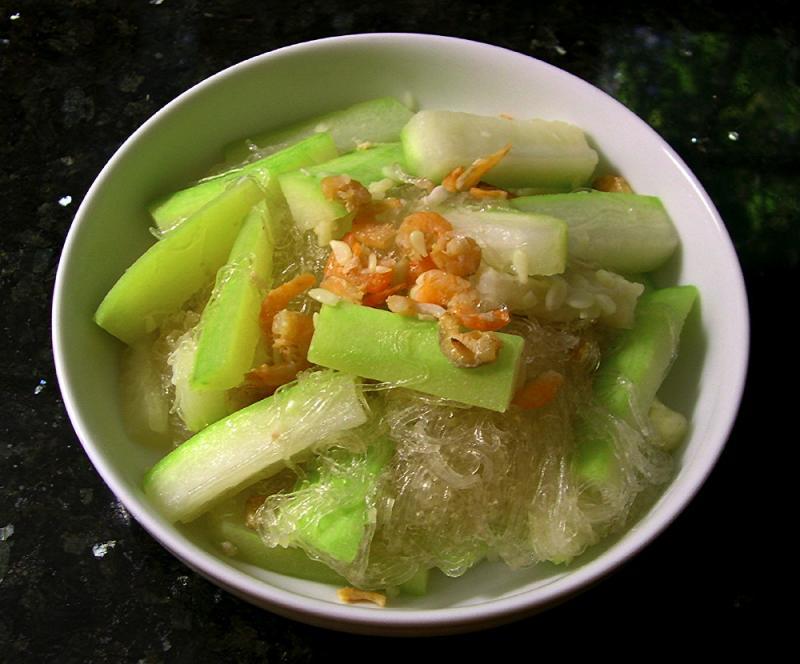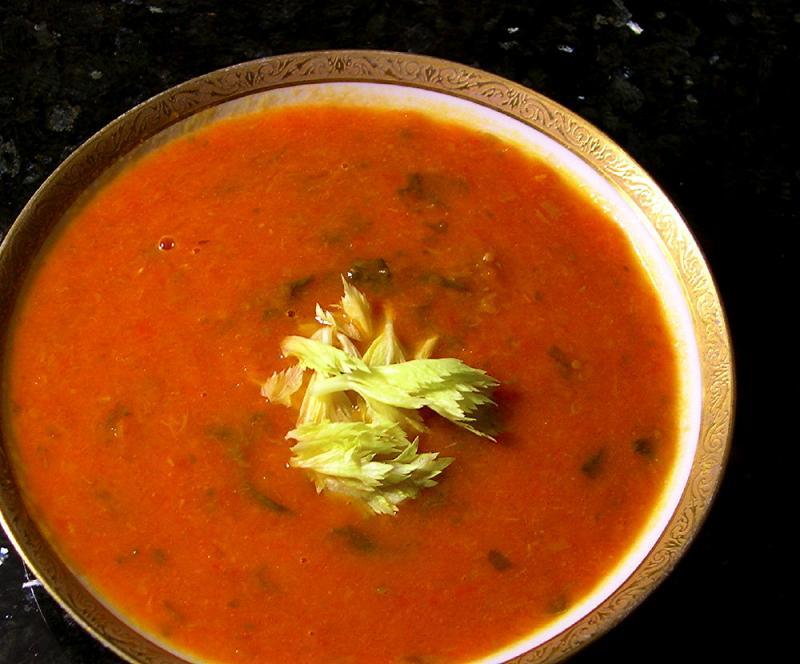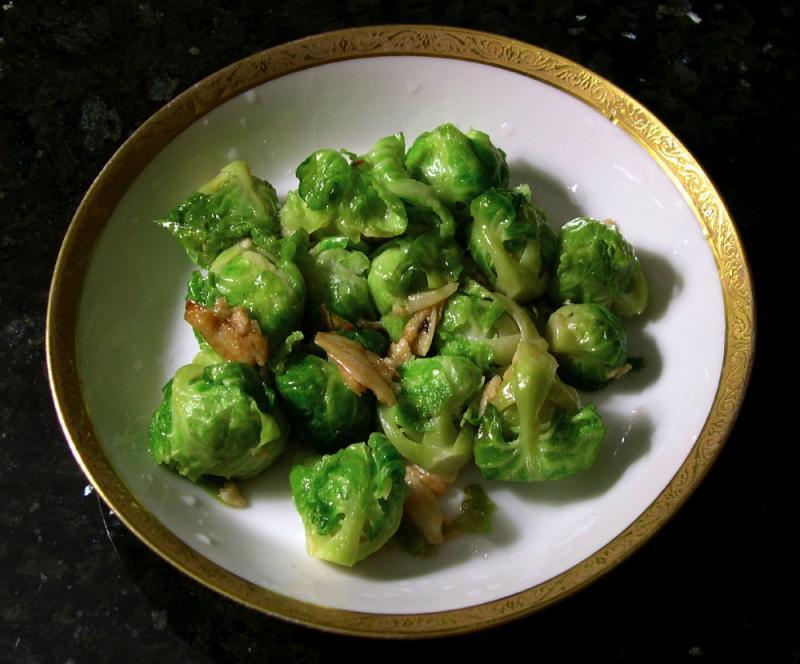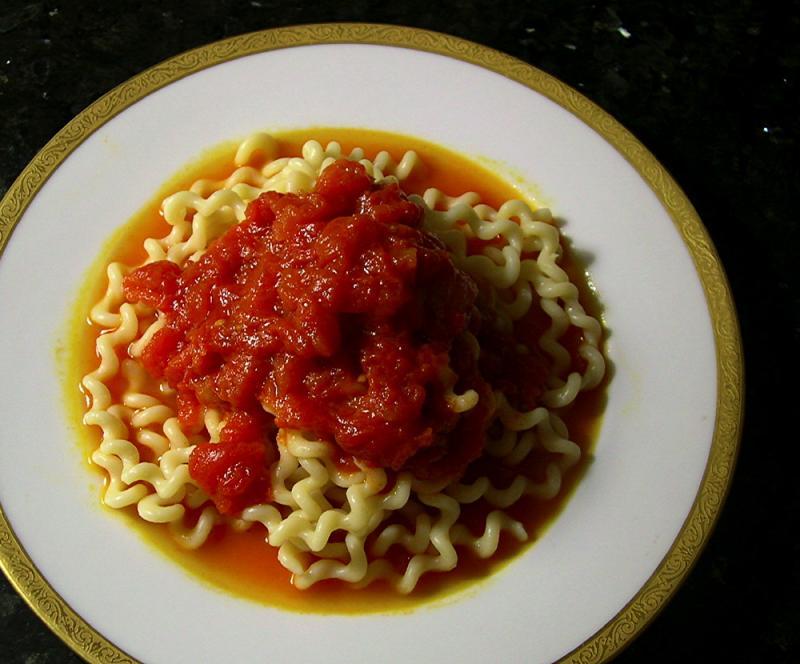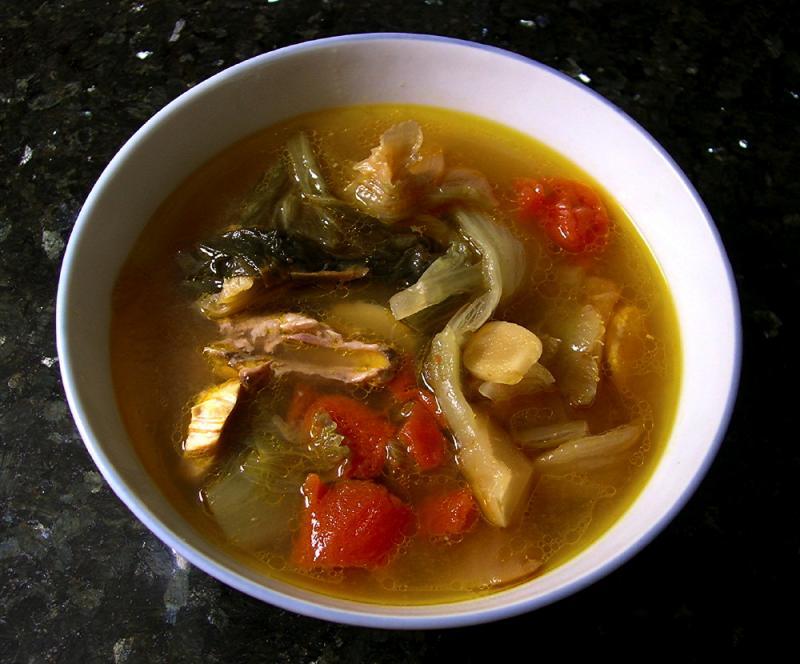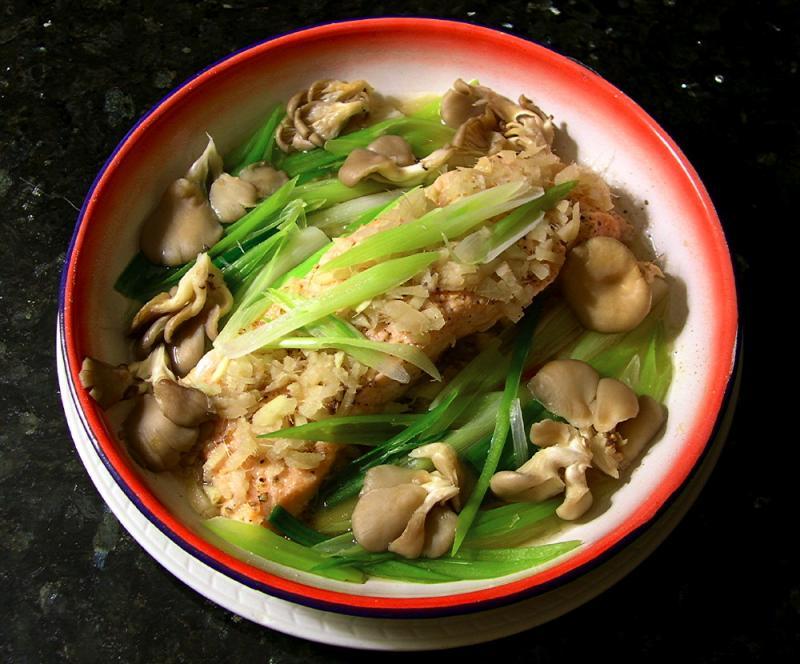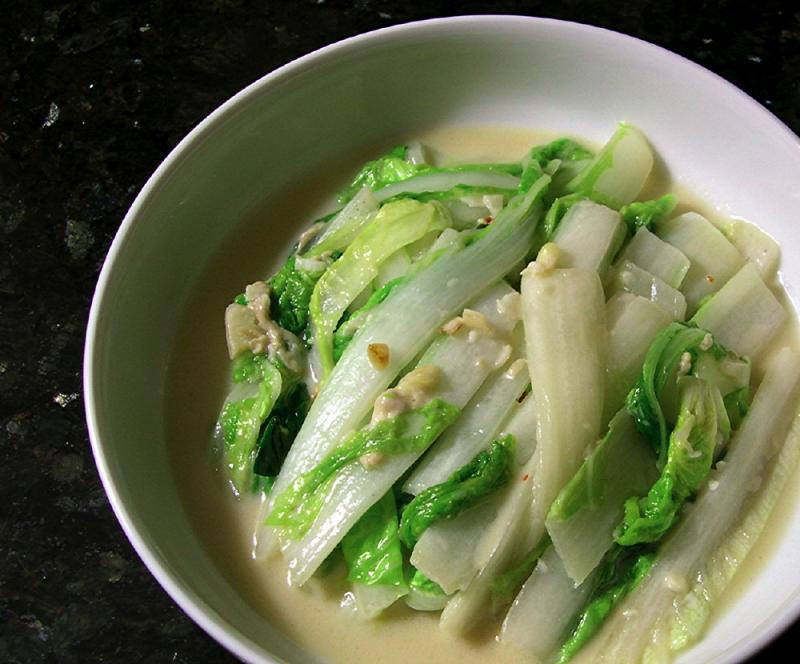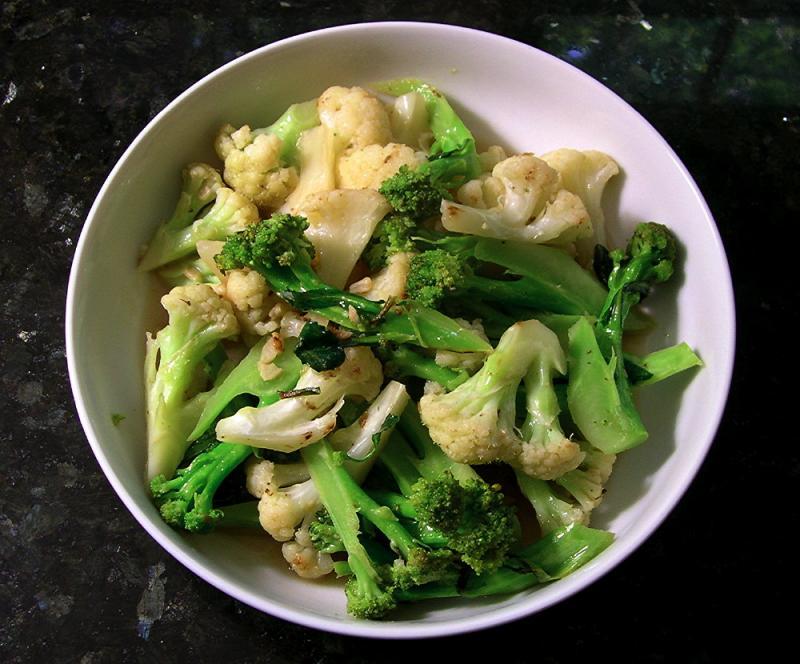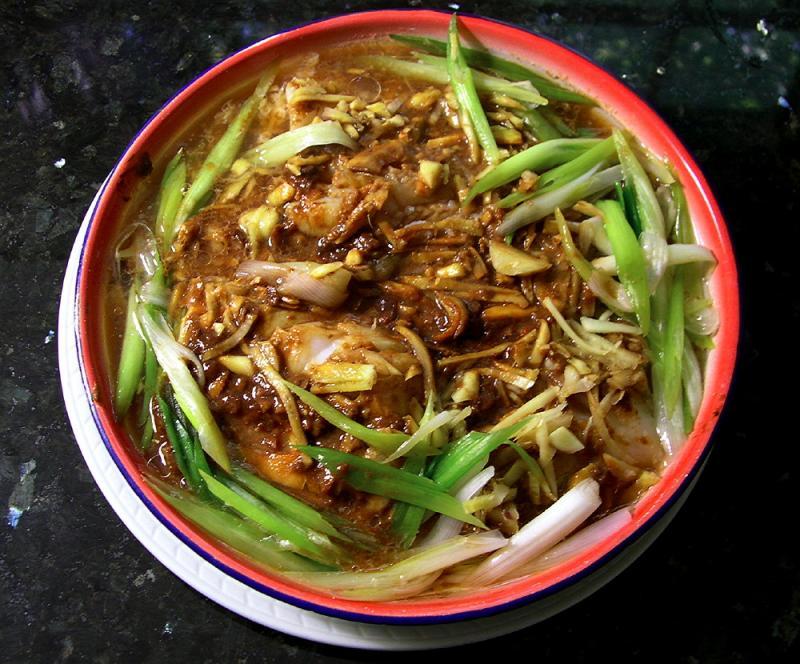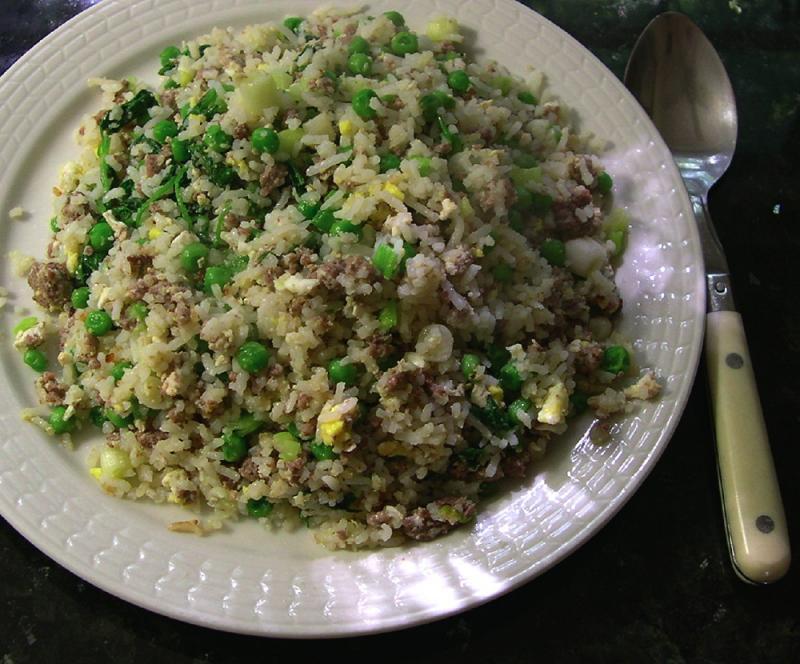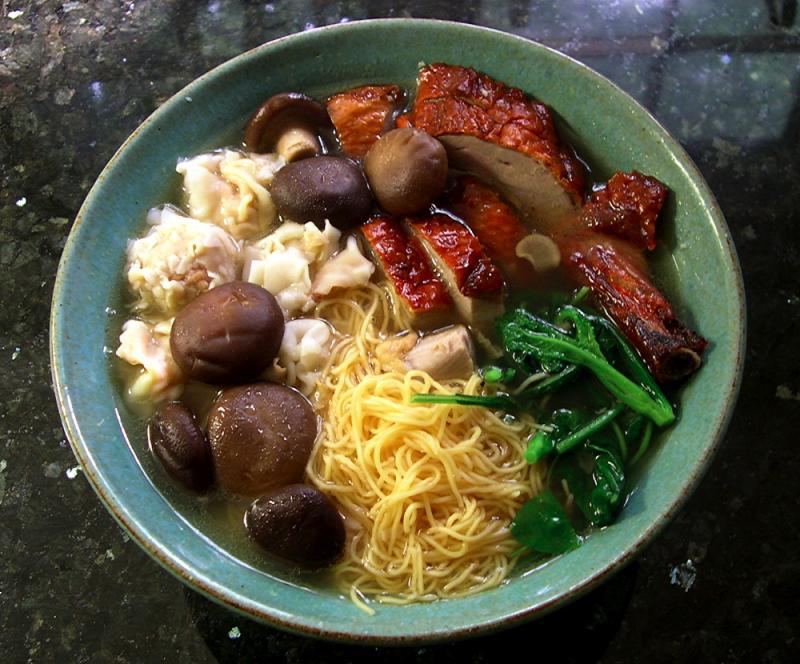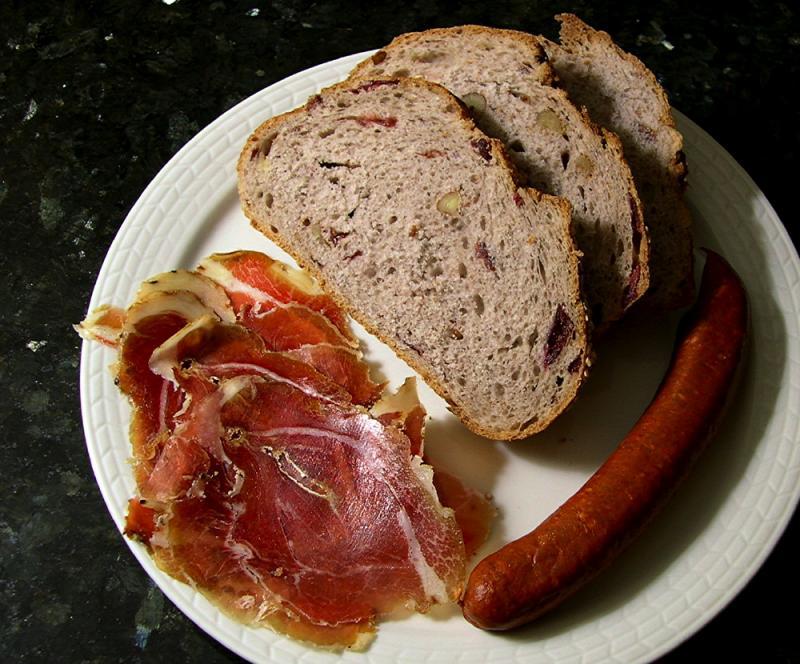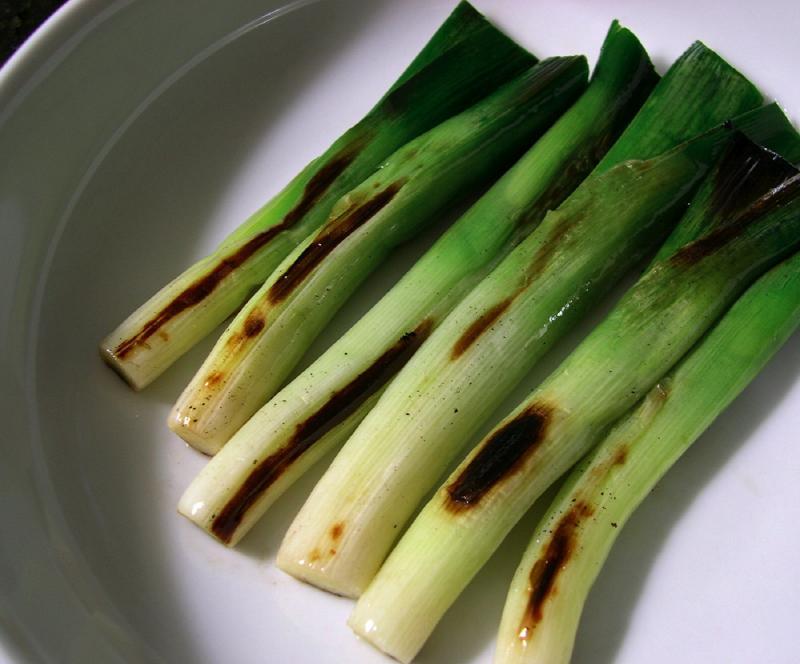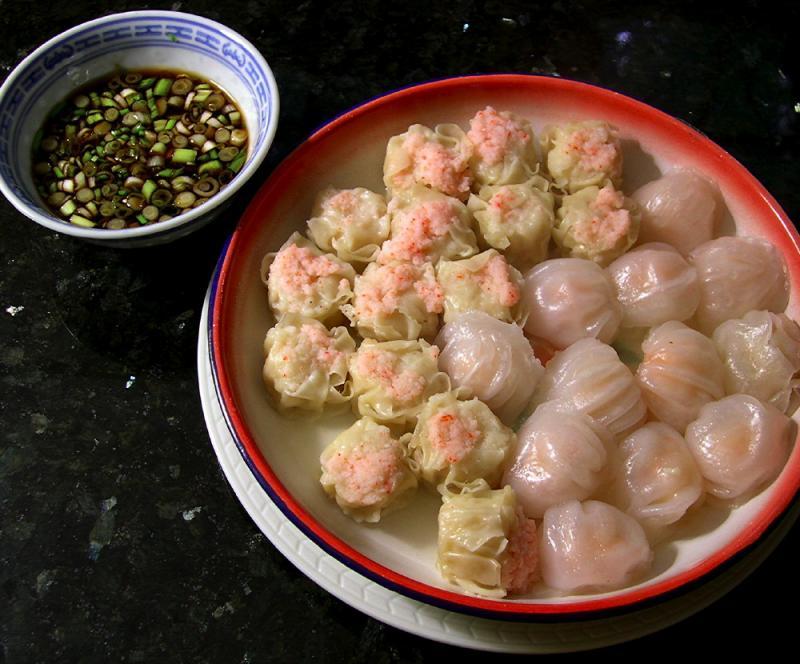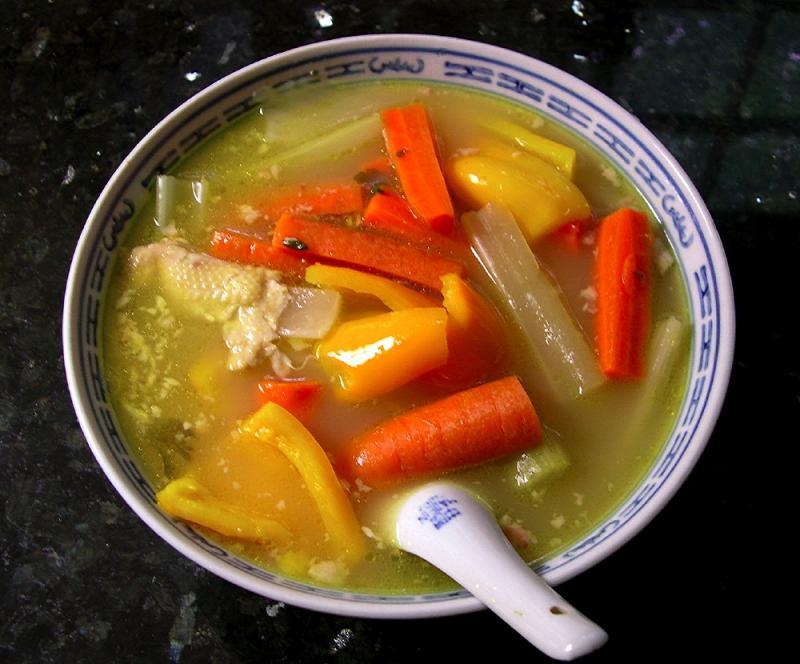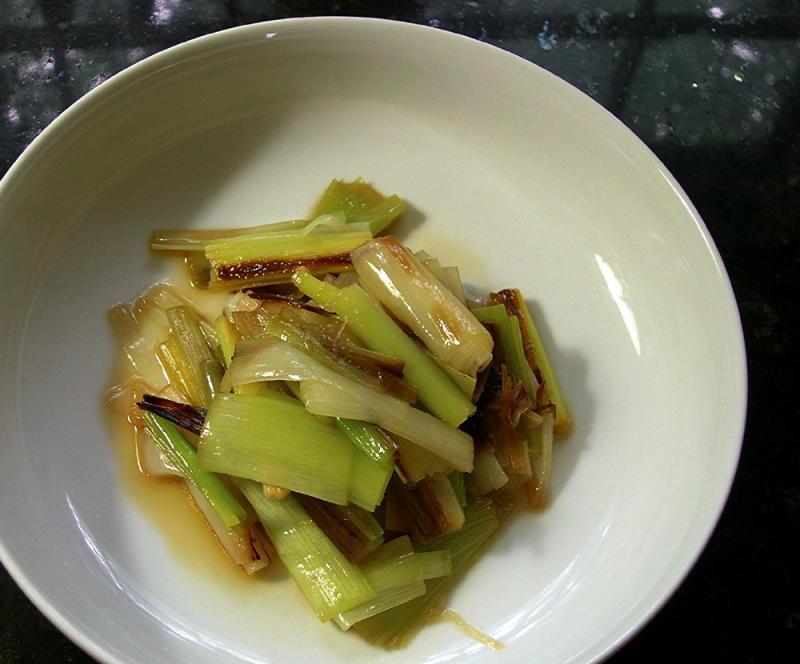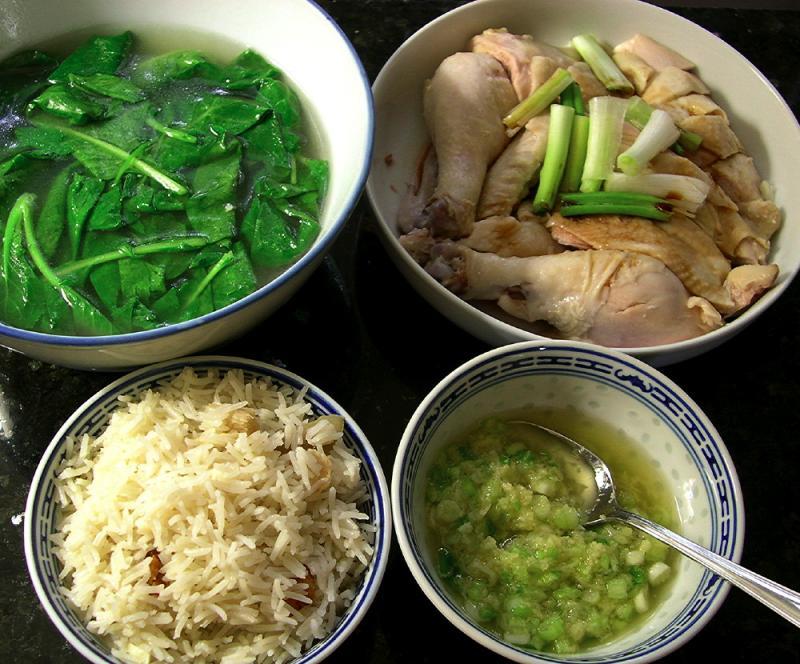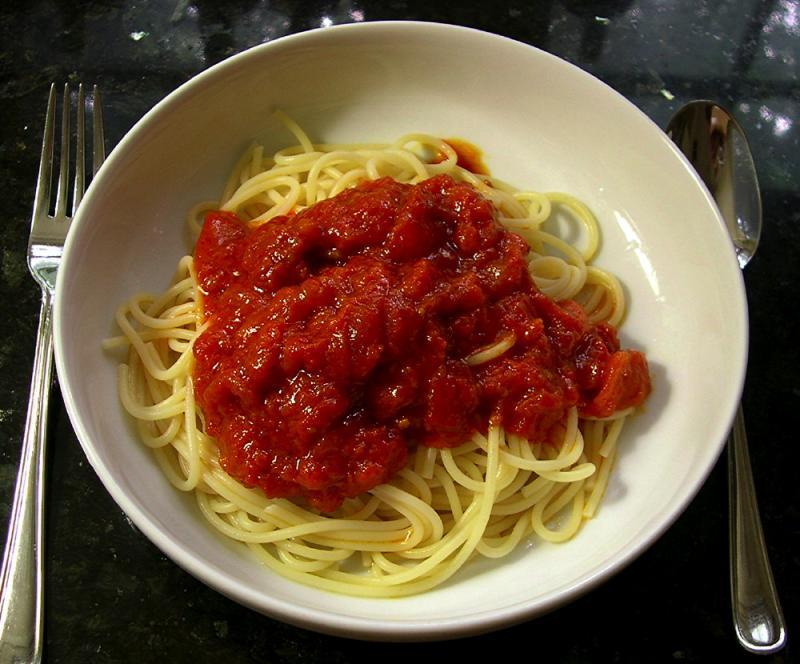-
Posts
3,810 -
Joined
-
Last visited
Content Type
Profiles
Forums
Store
Help Articles
Everything posted by huiray
-
B'fast today: A pack of "Ho Fan Abalone Chicken Soup Flavored" [sau Tao] (this one) gussied up w/ leftover broiled turmeric chicken wings, tuscan kale (fished from the pork stock it was simmered in), and maitake mushrooms + snow fungus stir-fried w/ scallions. It worked quite well.
-
Couple of recent dinners. -------------------- • Watercress wilted in chicken slow-simmered broth w/ some chicken skin. • More Hazan tomato sauce w/ spaghetti [Garofalo]. (I've been on a Hazan TS kick lately) -------------------- • Broiled turmeric chicken wings ( 黃薑雞翼 / 黃薑雞翅 ) chez huiray. This has various condiments and sauces &etc in it, far more than just turmeric. ;-) • Tuscan kale in pork stock (not pictured). • Maitake mushrooms (fresh) and snow fungus (rehydrated) stir-fried w/ scallions (not pictured). • White rice (Basmati) [Zebra brand] Edited to add alternative Chinese terms
-
I like runny eggs. I drink my half-boiled eggs, when I have them for breakfast. Snotty, spermy, whatever. Yes, on another food forum there was once a discussion about how barely cooked "half-boiled eggs" looked "spermy" and after an explication of what sperm-y meant some posters avowed that they would never eat such eggs again. Too bad for them. ;-) But back to the topic - I don't mind eggs on a hamburger or on a salad - I haven't got "tired" of them yet, maybe because I'm not in the habit of eating such things on a daily basis. I wonder about Cowen's eating choices and exposure to these items...
-
Y'know, Gai Lan/ Kai Lan is also kale. It's frequently called "Chinese kale", and is a member of the Brassica oleracea group, just like the standard Western curly kale (ditto Tuscan kale and its synonyms). For that matter, collard greens and Brussels sprouts are also members of the Brassica oleracea group. http://en.wikipedia.org/wiki/Kale http://en.wikipedia.org/wiki/Kai-lan ...and so on. Dana Cowen didn't specifically specify WHICH variety of kale she was throwing at them in the challenge, IIRC - it would have been interesting if someone had taken the broader view of "Kale" and challenged her in return.
-
This morning: • Marcella Hazan's simple tomato sauce, with ripe tomatoes (de-skinned, de-seeded, juices retained). Tossed w/ Cipriani tagliarelle Classiche. • Brussels sprouts, trimmed, halved; simmered in salted water till done, drained, tossed w/ EV olive oil & generous ground white pepper.
-
This morning: a pack of Dragonfly brand 'Instant Noodles Artificial Hot & Sour Shrimp Flavor', augmented w/ lots of chopped scallions and sliced celery. New to me. I like this one. The lemongrass and spicy flavors are definitely there, the noodles are quite pleasant and appropriate for what they are. I agree w/ Ramen Rater on this one.
-
Thanks, folks. Y'all put out nice b'fasts too!
-
A very late dinner last night: Teochew-style Bak Kut Teh.¶ Eaten w/ white rice (Hom Mali). I also added in Japanese-type Zen sushi age (fried tofu). ¶As distinct from the herbal Canto-Hoklo style I've posted about elsewhere here on the forum.
-
Breakfast a couple of days ago: Beef slices (from a hunk of top sirloin cap) marinated w/ Shaohsing wine, "aged soy sauce", white pepper, ryori-shu, sweet mirin, a bit of cornstarch. Stir-fried w/ young "Taiwan Bok Choy" (a variety of what is called "Napa cabbage" in the US) and lots and lots of chopped smashed garlic. Eaten w/ white rice (Thai Hom Mali) [Leftovers from dinner] ------------------------------------- Breakfast today: Slow-simmered chicken broth (from yesterday; using two stewing chickens, plenty of celery & carrots, some sliced ginger, sea salt), with some of the veggies and some chicken skin; eaten w/ Fuzhou flour vermicelli (福州麵線 ; Yale Cantonese: fuk1 jau1 min6 sin3; also a.k.a. "Mee sua" in Hokkien) [sun Kee]. Garnished w/ fresh celery leaves. The vermicelli:
-
it is as authentic as can be. The collard greens in stock looks like a v good innovation - hawker stalls normally just drop in chopped scallions. however, i would also have the chilli+ginger+garlic+sugar+salt+rendered chicken fat dipping sauce...for me, i cant do without chilli in HCR. Maybe its the photography, and YMMV but the chicken looks too pale and white - did you brush it with soya sauce and/or sessame oil right after you finished cooking it? The skin looks a bit thin: did you do the dipping in hot stock and ice/cold water 3 times or more? I was told that this technique increases the thickness of the skin's gelatinous collagen, but i still cannot get consistent results, and i blame it on the chicken, and not my technique :-))). Authenticity is a slippery word. Still, thank you Unlike ayam kampung in M'sia these and most non-free range chickens here do not have that deep yellow skin and darker flesh. (This chicken also had very thin skin to start with) I don't do the soy sauce brush or the sesame oil brush - I don't particularly care for them. I may brush the chicken after poaching w/ a neutral vegetable oil on occasion. I sometimes drizzle the assembled dish of chopped chicken pieces w/ sang chow, though, as I did here. I did the ice-water dipping just once. I frequently don't even do this - I like the extra gelatin that pools beneath the chicken (and gels into nice flavorful tidbits) when I don't. I'm not terribly concerned if I don't do precisely what some favored hawker or other does, I take into account what I feel like and what pleases me. I use many other kinds of vegetation and whatnot in the soups accompanying the HCR I make - I've described them in several other previous posts on HCR here on the forum. I use other sauces too, like a chicken liver sauce which I have also described elsewhere here. I also use various formulations for the chilli sauce for the HCR when I do have chilli sauce, also described elsewhere here.
-
http://www.chicagotribune.com/news/local/breaking/chi-authorities-masterchef-finalist-josh-marks-dies-from-apparent-suicide-20131011,0,2429333.story
-
Uh, tastes like okra? (No, it *doesn't* taste like chicken ;-) )
-
My favorite brand of dry "pasta" (note quote marks) is actually Cipriani, with their egg-noodle line. Wonderful stuff, just not exactly a buck for a pound. Actually, quite a bit more. WRT semolina-type non-eggy dry pasta, I don't have a particular overriding favorite. I buy and eat various brands, both USAmerican and imported, but not the stuff along the lines of Muellers's or equivalent. Brands I frequently buy include De Cecco, Ferrara, Garofalo, etc etc; with clearly artisanal types more infrequently. (I used to buy Barilla's not infrequently but will no longer do so, and have thrown out my remaining Barilla stock) Fresh pasta from local producers, of course, is the best in many (but not all) cases - when I make Pasta Carbonara, for example, IMO fresh pasta is not the best choice and a good DRIED pasta is much, much preferred. ETA: Would "pasta" include "noodles"? After all, there are a great number of "pasta"/"noodle" products from all over, NOT just Italy - and one could murmur various things about all sorts of wonderful Chinese-type things in this field. ;-)
-
Oh, I dunno.....I thought it entertaining. :-)
-
Some news that is closely related to Top Chef: http://variety.com/2013/tv/news/magical-elves-considers-sale-options-exclusive-1200600644/
-
So - episode 2 with gumbo (an overnighter of a QF) & food trucks (EC; they serve Habitat for Humanity volunteers). I suppose the latter tied in with Padma Lakshmi having those two food truckers try out for a TC spot in an episode of her "Padma's Picks" sequence. I enjoyed this recap from Grub Street, in which the reviewer put in this little throw-away bit: So far, New Orleans is not getting the best PR: According to Top Chef Season 11, it is a place where you stand in swamps, drink sugar, and eat bugs, and then every few years, your house blows down. Heh.
-
I suspect you are thinking of what is commonly called "Malabar Spinach" in English"? Does it look like this or like this when bundled up for sale? It's also available in Indian/Pakistani groceries, Vietnamese & other E/SE Asian groceries...
-
Breakfast yesterday: Stew of sliced beef shin (browned), sautéed garlic, (simmered for ~1 hr), fresh carrots & young daikon, yellow onion, purple potatoes, sea salt, whole cloves, stick cinnamon & 1 star anise; left overnight at RT to deepen & meld further in taste. Eaten w/ white rice (Basmati). --------------------- Breakfast today: Peeled, sliced Chinese hairy gourd (mou gua), cellophane noodles, sautéed smashed chopped garlic, dried shrimp (pre-soaked); splash of Shaohsing wine, seasoned/salted to taste. (a.k.a. 大姨媽嫁女)
-
One way I like them is as whole baby/small okra (no more than 2-3 inches long, entire - i.e. unsliced, caps on, just with the stem trimmed off to the cap) tossed into a soup like tom yum soup or other spicy shrimp/meat/whatever soup (all containing other stuff in it) at the last minute and simmered very briefly (maybe a minute or less) so that the okra is still almost raw/just cooked. Crunchy, non-slimy; soup preferably eaten immediately after finishing.
-

A pictorial guide to Chinese cooking ingredients
huiray replied to a topic in China: Cooking & Baking
BTW, Anna_N (and jameswilliam), the characters in white at the top of the bottle label 中国驰名商标 (or, if in Traditional Chinese: 中國馳名商標) basically says "China famous (or renowned) trademark". -
Yes, if the materials used to make the pasta is the same in the two cases and the handling of the product from the dies is also the same. In which case the die is the variable and the comparison involves only the dies. jvalentino describes his experience in an earlier post where he appears to have used the same dough mixture to make his pasta, but used different dies, and suggested a reason for why dcarch might not have observed a difference while he did. @jvalentino: was this the case? Did you use a modern bronze die (as distinct from an antique bronze die - see previous comments in above posts) versus a modern die made of something else? No one has said anything about eating dies. Odd deflection. I thought we *were* comparing the product from the dies. But of course personal preferences inform the individual palate. Cultural preferences in a general sense can factor in too. I doubt we are arguing about those two things. The discussion about whether there is a difference between pastas produced from different dies (whether there is, or not) is, after all, also not the same thing as whether an individual prefers one over the other. (((Shrug))) Ehh, to each his/her own and the bases of comparison for something of interest.
-
It might seem, then, that religion (Catholic) could be a large part of this upcoming FOOD blog? I hope not. If it were to be, that would be too bad. I thought religion was something that was to be avoided in a general sense as a focus on this forum (as on any forum not specifically devoted to discussing religion) unless the thread did clearly involve religion.
-
Some recent dinners. --------------------------- • Very thinly sliced Finocchiona; as appetizer munchies. • Tomato soup. Deseeded deskinned ripe tomatoes, cut-up, juices retained; finely chopped celery & celery leaves, 1 finely sliced small shallot, sautéed in EV olive oil; fresh basil leaves; sea salt; simmered about ¾ hour. Coarsely blended (stick blender). Drizzle of black truffle oil, mixed in. • Cavolini di Bruxelles con aglio e olio. • Marcella Hazan style tomato sauce – Ripe tomatoes (deskinned, deseeded, juices retained), butter, halved onion, sea salt, only roughly break up tomato pieces, simmer, onion removed. Served on fusilli col buco [Rustichella d’Abruzzo]. I put on a fair bit of sauce, I wanted to savor the sauce as much as the pasta. In honor of her passing. • Gelato al pistacchio [Gooose the Market]. -------------------------------- • Harm Choy Tong. Pork spare ribs, chicken breast meat, sour pickled mustard (soaked a bit and drained/squeezed out), tomatoes (canned), sliced ginger, water, a bit of sea salt, a bit of rice vinegar [Kong Yen]. -------------------------------- • Atlantic salmon fillet (farmed); dressed w/ Shaohsing wine (Nuerhong; “Premium Matured”) [Gold Plum], vegetable oil, sea salt, ground white pepper, finely sliced/chopped fresh young ginger, sliced green onions & small fresh oyster mushrooms scattered on both sides and on top; then steamed till just done. • Young "Taiwan Bok Choy" (台灣白菜) (this is a variety of what would be familiar to USAmericans as "Napa-type cabbage"), stir-fried w/ chopped smashed garlic (Music) & fermented bean curd (fu yee) [Chan Moon Kee]. • White rice (Basmati) [Royal].
-
Some recent lunches. --------------------------- • Stir-fried broccoli & cauliflower florets. • Cod fillets steamed w/ soy bean paste (陳年豆瓣醬) [Mingteh Food Industry Inc] (this one), garlic, ginger, scallions. • White rice (Basmati). • Sautéed snow peas (not pictured). ---------------------------- • Fried rice. Done w/ Andouille sausage meat, chopped garlic, couple of farm eggs, day-old rice, frozen peas, chopped scallions, chopped coriander leaves, salt. ------------------------------ • Cantonese roast duck [Asia Mart], pork & shrimp wontons [Prime Food], fresh small tung koo, young Tuscan kale (hydroponic), skinny wonton noodles [Twin Marquis]; in chicken stock simmered w/ a little oil, some ikan bilis & those small tung koo. --------------------------------- B’fast/Lunch Part 1 • Culatello slices & a Debreziner sausage [Goose the Market]. • Walnut & cranberry bread [brotgarten]. • Sautéed baby leeks (purposely browned/slightly blackened) (each "stalk" shown is an entire leek, minus the roots and the green tops). Lunch Part 2 • Steamed Har Gow [Prime Food] & Shumai [JFC]. • Dipping sauce of light soy sauce [Pearl River], aged soy sauce [Kim Lan], “aged gourmet rice vinegar” [Kong Yen], a splash of sweet mirin [Honteri], chopped scallions. ---------------------------------- • Slow-simmered chicken broth; plus fresh carrots, celery & orange sweet “snacking peppers” simmered in the broth. ----------------------------------- • Sautéed leeks (these were cut-up mature leeks, with very long white parts). • Spaghetti [Garofalo] w/ fresh Hazan-(simple)style tomato sauce, using canned Italian-type plum tomatoes. The sauce is much less “liquid” than a previous batch using fresh ripe tomatoes (deskinned, deseeded). ------------------------------------- • Hainanese Chicken Rice. Small (3 lb) Bell & Evans chicken, skin exfoliated w/ coarse Kosher salt, rinsed off, stuffed w/ sliced ginger and scallion pieces, poached [brought to boil then heat shut off] to ~ 160ºF in the thigh, dumped in ice water; rice (cooked w/ additional chicken fat, rendered in the rice pot; chopped garlic, ginger, pandan leaves, the poaching stock); young collard greens (hydroponic) in the poaching stock; grated ginger/chopped scallion/salt/hot oil dipping sauce.
-
This is NOT a valid comparison. It simply isn't. This is a valid comparison. ----------- Why you (BK) would think that a "comparison" between one manufacturer with one process and a different manufacturer with another process would "demonstrate" the difference between brass dies and non-brass dies is beyond me. I must profess my bewilderment at your "comparison". This is about taste and texture, not a high-school science project. The means count for nothing, the ends when you are finished eating the pasta everything. The difference between the materials used for dcarch dies is the LEAST important factor, because dcarch cannot make an antique bronze die of the type used by Italian artisanal pasta makers, and, absent that, there is no experiment and no valid test there. He might be able to fashion a plastic die (or, more likely, one of some metal other than bronze) that could deliver the characteristic striations that bronze dies deliver, but frankly, the odds are stacked against any of us who try to compete with Italian artisans who have been doing this longer than any of us have been alive. Remember, this applies only to dried, water-and-hard wheat pasta. I suspect that what dcarch was extruding was, in fact, fresh pasta that is being dried to some degree. Not even the same type of pasta. Look again at what I said about the curing process, wheat varieties, etc. and dried vs. fresh pasta. All of that eclipses a simple, homemade plastic vs. bronze die experiment... Then simply say that there can't be a true side-by-side comparison between an antique bronze die and something else. Since the whole process and the variations thereof are more important, a direct comparison between an artisanal spaghetti and Mueller's spaghetti simply illustrates that the artisanal spaghetti is better overall. Although you did not say it directly, it was implied in your comparison that the example you cited would illustrate the superiority of a brass die - but perhaps that was not your intention.


